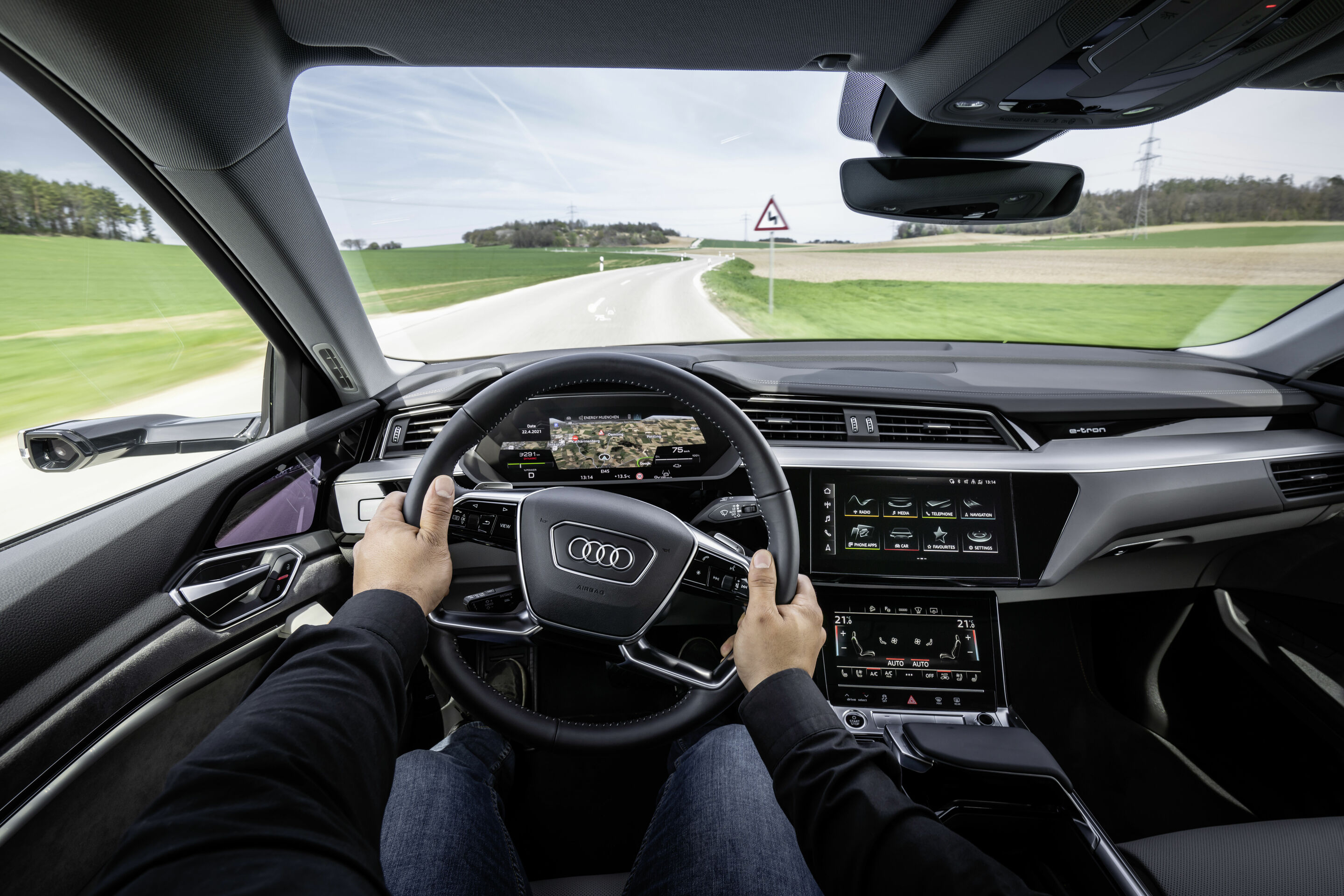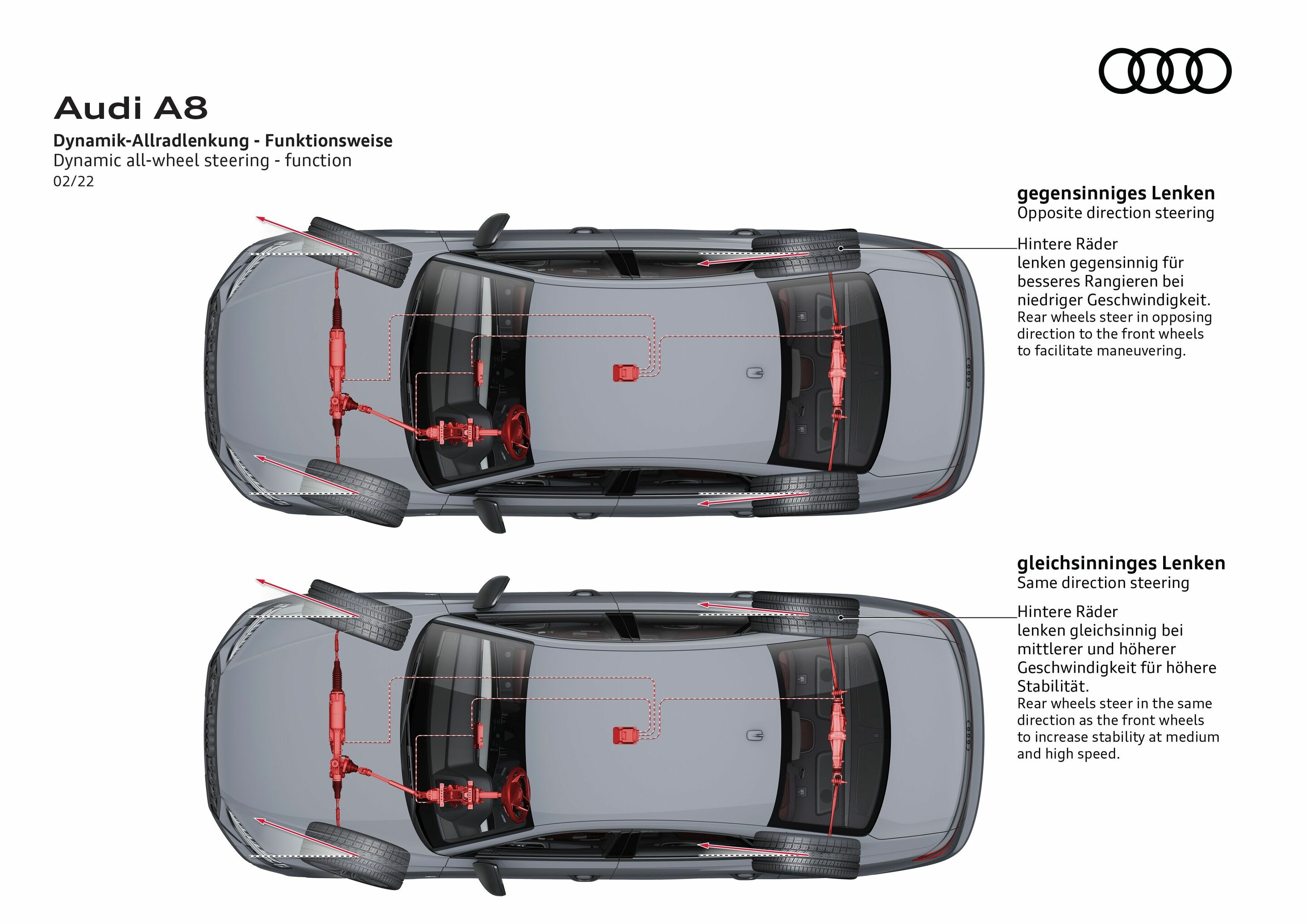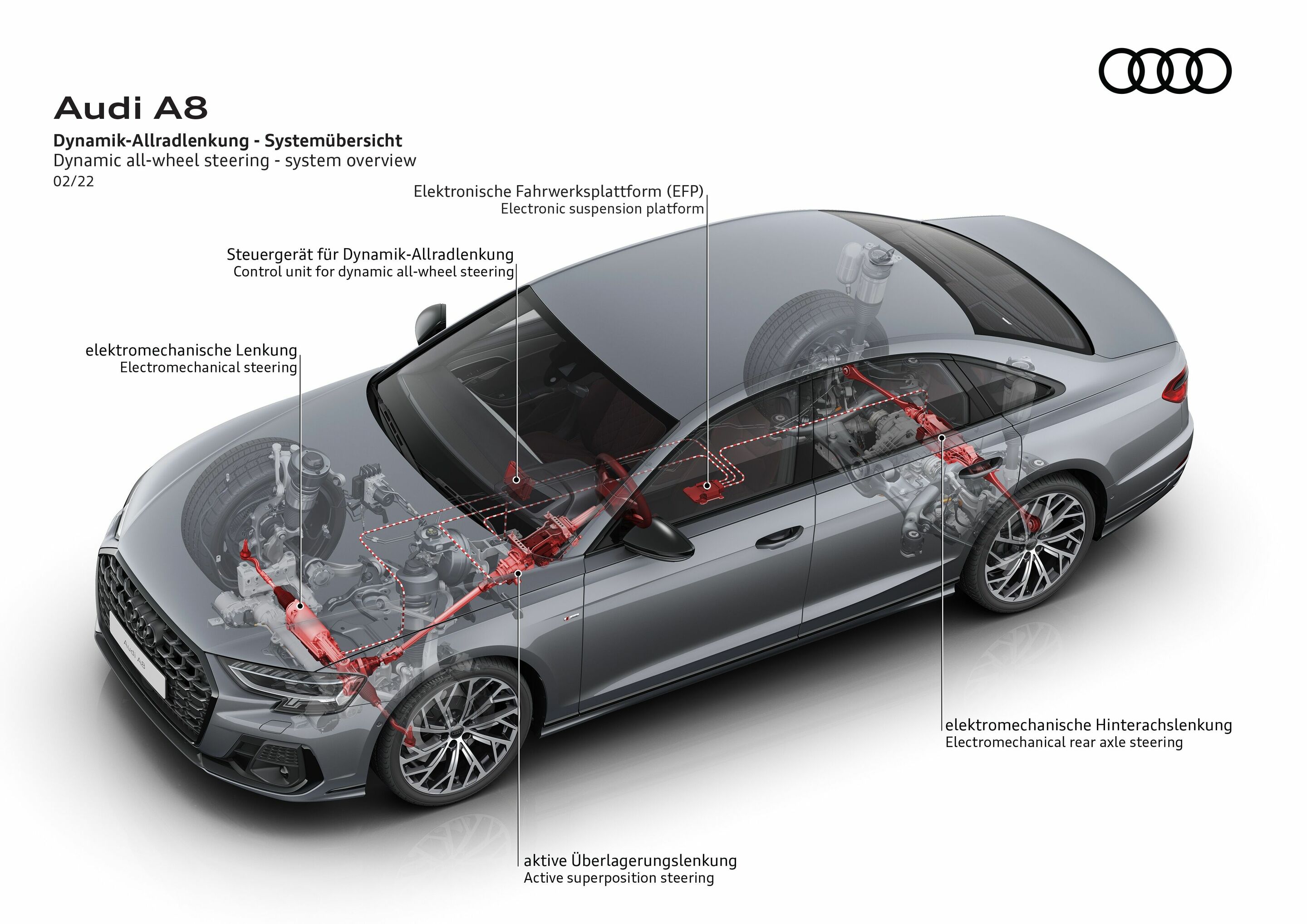Search
All search results for "dynamic all-wheel steering"
(229)
 Audi Q3
Audi Q3
Audi Q3
The new Audi Q3 is our impressive all-rounder in the compact segment. Now in its third generation, the SUV stands out with its dynamic, muscular look. As a digital companion for everyday life, the Q3 is ideally equipped to deliver an inspiring driving experience thanks to its modern driver assistance systems and lighting technology from the full-size class. On the inside, the modern steering wheel control unit enables a new operating experience and creates even more storage space and a more spacious feel.
 Improved handling: progressive steering and all-wheel steering
Improved handling: progressive steering and all-wheel steering
The reworked and now more direct steering contributes significantly to the comfortable yet equally dynamic handling of the new A6 Avant. Compared to its predecessor, the entire path from the steering wheel to the wheels is designed to be stiffer. This includes the torsion bar at the steering gear, the rigidly bolted steering rack, and the stiffer control arm bushings. Camber on the front axle has also been slightly increased. All in all, these measures result in a noticeably improved steering response and more feedback from the road, which makes for precise and light-footed vehicle handling. The A6 Avant comes standard with electromechanical progressive steering. The steering ratio varies depending on the steering angle: at small steering angles, such as on the highway, the steering is more indirect to prevent any nervous behavior from influencing the steering. At larger steering angles, the ratio is increasingly more direct, reducing the amount of physical effort required to steer in city traffic and when parking. Moreover, the progressive steering provides a sporty driving feel in tight corners. The Audi drive select dynamic handling system can be used to vary the steering characteristics – specifically steering weight – in several modes. All-wheel steering is optionally available in conjunction with quattro all-wheel drive. It works with a dynamic function whose reaction speed has been improved even further. At speeds of up to roughly 60 km/h (37.3 mph), the rear wheels turn up to five degrees in the opposite direction to the front wheels. This decreases the turning circle by up to one meter (39.4 in), reducing it to 11.3 meters (37.1 ft). The car is thus more agile in city traffic and in tight curves. At medium and higher speeds, the rear wheels turn in the same direction, enabling stable and even more precise handling. The equipment, data and prices specified in this document refer to the model range offered in Germany.
 Fine-tuning the characteristics of the Audi steering system
Fine-tuning the characteristics of the Audi steering system
Interview with driving characteristics developer Carsten Jablonowski Basic calibration carried out virtually to create the typical Audi steering feel Different steering systems build on each other
Whether driving on winding roads in the Alps, a busy highway, or city streets filled with potholes on the way to the supermarket – a good steering wheel has to cover the entire spectrum of driving situations. In this interview, Carsten Jablonowski, Driving Characteristics Development Team Lead, explains the complex process of fine-tuning the chassis and steering, which is what gives an Audi its unique steering feel.
Mr. Jablonowski, how would you describe the typical Audi steering feel? When we’re behind the wheel of a car, its individual steering feel depends on a variety of factors. Among other factors, the overall design, vehicle weight and weight distribution play a role, as do the individual chassis components, the tires, and the steering system used. Now when I get into different Audi models, I get that familiar feeling after only a short time – the car steers effortlessly, smoothly, and precisely with little effort. And this is true regardless of whether I’m parking, driving through hairpin bends, or simply cruising around the city. Because an Audi steering wheel generates greater torque, I’m able to negotiate curves precisely and with agility. Our models change direction with a high degree of precision, especially when driving fast through alternating turns. On the other hand, an Audi will smoothly drive straight ahead at fast highway speeds and isn’t jittery at all. This means I can always feel how the car is interacting with the road. The steering wheel gives me direct feedback regarding the car’s balance, level of grip, and road unevenness such as bumps and ruts. All in all, this is important for a safe and pleasant driving experience. The vehicle development process takes up to five years.
 We’ve got the hang of it
We’ve got the hang of it
Customers can use Audi drive select to adjust the steering characteristics in various modes. In the “dynamic” driving profile, for instance, they get higher hand moment than in the “comfort” setting. From steel frames to high-tech steering – the evolution of the Audi steering wheel The steering wheel is much more than a tool for changing direction: it is the digital control room and the most important interface between human and machine. Today’s Audi drivers operate up to 18 functions via multifunction buttons – from communication to infotainment to comfort features. Audi steering wheels have therefore turned into real command centers. In that respect, they all have one thing in common: they share Audi’s standard sporty look, lie ergonomically in the driver’s hands, and offer high functionality with intuitive operation. Why do we all actually use steering wheels? The steering wheel has been the dominant feature inside the car for over 120 years. In the beginning, there was a steering lever or handle bar. That is how the occupant would change the wheels’ steering angle. However, steering was anything but precise or flexible. With the steering wheel design, French engineer Alfred Vacheron developed a technical alternative for the first time in order to optimize the controls over the steering precision of the front wheels with his “volant.” The clou: the circular controller enabled the steering angle to be transmitted in multiple rotations. Shortly after it was introduced, the steering wheel evolved into the worldwide standard. How has the Audi steering wheel changed over time? Even Audi’s earliest series vehicles like the Type A and Type B were equipped with wheels like that, which at the time were still oversized steering wheel rims. A lot has happened since then – the steering wheel has developed evolutionarily with the car. Thanks to hydraulic power steering, which Audi introduced in the 1980s, it became smaller and more manageable.
 Audi A6 Avant e-hybrid quattro
Audi A6 Avant e-hybrid quattro
Audi A6 Avant e-hybrid quattro
With a system output of up to 270 kW, an electric range of up to 106 kilometers (65.9 mi), standard all-wheel steering, and optimized aeroacoustics, the Audi A6 Avant e-hybrid quattro delivers a sporty and comfortable driving experience with plenty of freedom for everyday flexibility. It also comes with extensive standard equipment.
 Audi A6 Sedan
Audi A6 Sedan
In combination with sophisticated suspension technologies, the A6 Sedan impresses with its qualities for everyday and long-distance driving: both the adaptive air suspension and all-wheel steering combine driving comfort and agile handling to the highest degree.
 Audi A6 Avant
Audi A6 Avant
Whether on long trips or city driving, the adaptive air suspension and all-wheel steering ensure a smooth ride and sporty handling in equal measure. Additional highlights include intuitive operating and infotainment concepts, new digital lighting technology, and intelligent driver assistance systems.
 A class act: the new Audi A6 Avant
A class act: the new Audi A6 Avant
Dynamic design and exceptional aerodynamics meet high demands for everyday and long‑distance driving Partially electric driving, enhanced efficiency, and greater performance: the mild hybrid technology MHEV plus The perfect blend of sportiness and comfort: adaptive air suspension and all-wheel steering
The new Audi A6 Avant is more dynamic, efficient, and digital than ever. It stands for first-class travel like no other vehicle in the premium full size class. Modern gasoline and diesel engines increase performance and reduce CO2 emissions thanks to the mild hybrid technology MHEV plus. On long journeys and in the city, the adaptive air suspension and all-wheel steering ensure a high level of driving comfort and agile handling in equal measure. The outstanding drag coefficient of 0.25 – the best value of an Audi Avant with a combustion engine – means high efficiency and demonstrates the perfect interplay of form and function. The exterior reflects the vehicle’s sporty, elegant character and gives the A6 Avant a striking presence with new digital lighting technology. The model also impresses with its intuitive and systematically user-oriented operating and infotainment concept with Audi MMI panoramic display and front passenger display.
Audi CEO Gernot Döllner: “We are writing the next chapter in our Avant history: The new Audi A6 unites an elegant and dynamic design with exceptional aerodynamics. Efficient yet high‑performance drive systems and cutting-edge suspension technology combine sportiness with a high level of comfort, making traveling in the A6 a first-class experience.” With this model, the company is also continuing its major product initiative that began in 2024. The modernization and rejuvenation of the product portfolio is part of the Audi Agenda, with which Audi is positioning itself for the future in the face of intensified competition. “With the A6, we are now renewing an important model series,” said Döllner.





